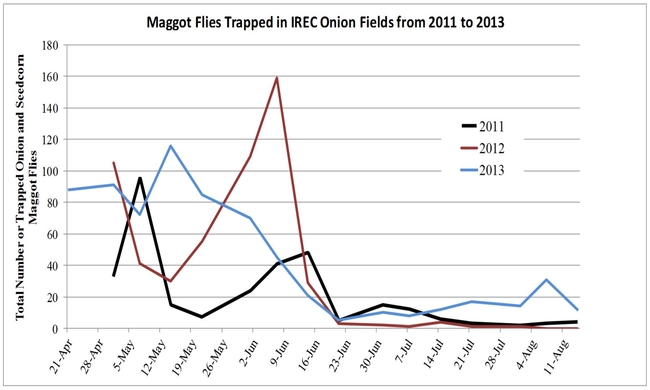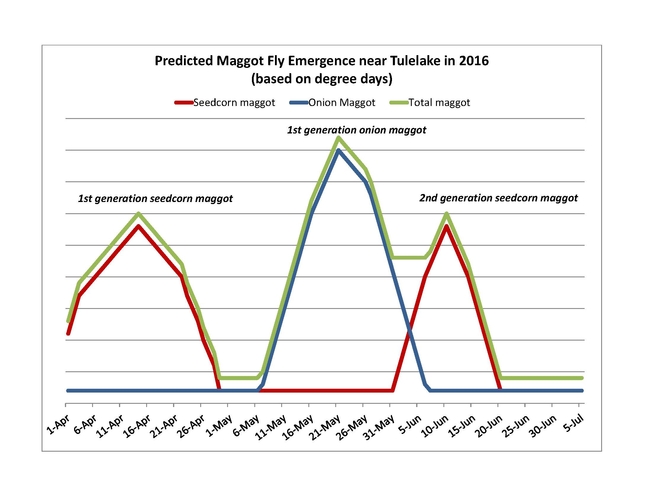Several experiments were conducted at IREC from 2011 to 2013 examining insecticides applied at planting for protecting onion stands from maggot damage. The results show seed treatments with OI100 (spinosad) or Sepresto (clothianidin + imidacloprid) were the most effective all three years. The next best labeled option was Lorsban applied in furrow at the maximum label rate. In untreated plots, onion stands were reduced at least 50% from maggot feeding compared to those treated with an insecticide.
During the study we trapped maggot flies to determine when adults emerge and deposit eggs in onion fields. The results from 2011, 2012, and 2013 are shown in the figure below. All three years, seedcorn maggot and onion maggot flies were found in the traps. Researchers in New York and Canada have developed degree day models to predict fly emergence based on air temperatures. Using Tulelake weather data, we compared their predicted emergence dates with fly counts from 2011-2013. Most years, the predicted emergence date came close to matching elevated fly counts.
Below is a graph showing predicted emergence of seedcorn and onion maggot using 2016 weather data. 2016 air temperatures and degree days in Tulelake from January to March 30th are similar to 2014. In 2016, peak first generation seedcorn maggot flight is predicted to peak in mid-April. Seedcorn maggot is widespread and most problematic in fields with a lot of decaying organic matter, especially following alfalfa. Onion maggot is also widespread and problematic in most onion fields. Onion maggot overwinter in onion cull material and flies are attracted to deposit eggs at the base of onions plants. Onion maggot is most problematic in fields located within 0.75 miles of old onion fields with cull material left in the field.
First generation seedcorn maggot larvae will be feeding from mid-April through May when onions are sensitive to maggot damage. Second generation seedcorn maggot fly emergence will likely occur early enough for seedcorn maggot to damage plantings in May.

